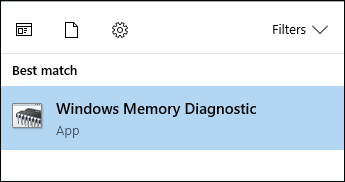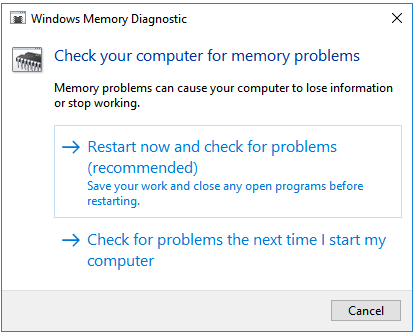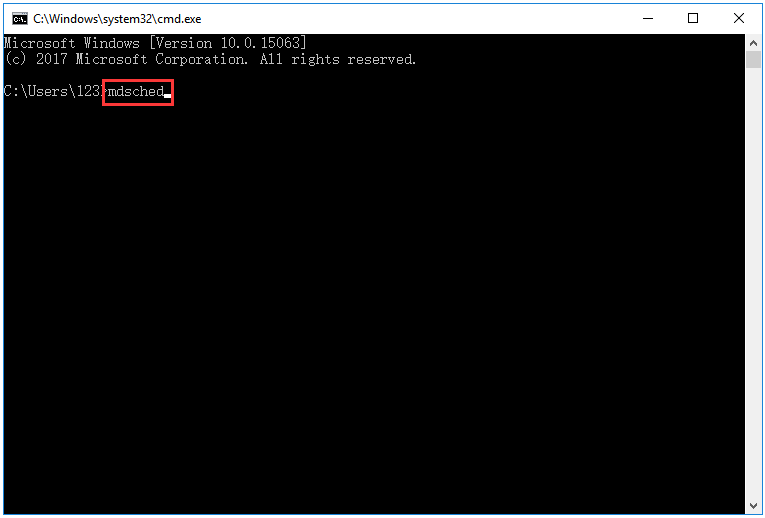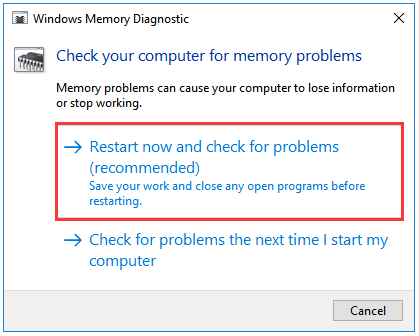How Long Does Windows Memory Diagnostic Take
4 Means to Open Windows Memory Diagnostic to Check Retentiveness [MiniTool Wiki]
Quick Navigation :
- Windows Memory Diagnostic Tool
- 4 Ways to Open Windows Memory Diagnostic Tool
- How to Use Windows Memory Diagnostic to Cheque Retentivity Problems?
- How to Check the Examination Result?
Windows Retentivity Diagnostic Tool (WMD) is a congenital-in memory tool of Windows, and information technology is available in Windows 7 and above Windows versions.
Windows Memory Diagnostic Tool is an excellent gratis retentiveness test programme. To put it more conspicuously, information technology is used to check for possible memory problems, including testing of the Random Admission Retention (RAM) on your computer.
Pros and Cons of Windows Memory Diagnostic Tool
Pros:
- Free;
- Easy performance;
- No user intervention required;
- Windows does not demand to be working or installed to apply the tool.
Cons:
- Only test the offset 4GB of RAM;
- Extra steps are required when you lot create a startup disk and CD paradigm.
If you encounter memory problems, you lot can use Windows Retentivity Diagnostic Tool to find them out. But practice you know how to open information technology? The following content will display iv ways to open Windows Memory Diagnostic Tool. Let'south acquire about them respectively.
Note: Please save everything on your calculator for the figurer will be restarted past the retention diagnostic process.
Way 1: Open up Windows Memory Diagnostic Tool by searching.
Blazon Windows Memory Diagnostic in the Cortana search box. Then click the searching upshot named Windows Retentiveness Diagnostic to open up this tool.

Way two: Open Windows Retentivity Diagnostic Tool through Run
Step 1: Printing the Windows icon and the R key on the keyboard simultaneously.
Step 2: Blazon mdsched then click OK.

You volition get a pop-upwards window as the following movie shows.

Style 3: Open Open up Windows Memory Diagnostic Tool in Command Console
Pace 1: Blazon Control Console in the Cortana search box and choose the searching result named Control Panel.
Tip: You can click here if y'all desire to learn more about Control Panel.

Step two: Blazon memo in the top-right box and click Diagnose your computer's memory problems.

Way iv: Open Windows Memory Diagnostic Tools via CMD
Step i: Printing the Windows icon and the R key on the keyboard simultaneously.
Footstep 2: Type cmd in the Open box and and then click OK. (You can click hither to learn more about CMD.)

Step 3: Type mdsched and printing Enter.

How to Use Windows Memory Diagnostic to Check Retentiveness Issues?
Now, you have known how to open Windows Memory Diagnostic. Let's see how to use it to carry out a retentivity exam.
Step one: Open Windows Retentivity Diagnostic.
Step 2: Choose the Restart now and check for problems option.

Notation: The tool likewise allows y'all to do a examination in the next reboot if yous cannot close your applications and restart immediately.
Once your reckoner restarts, it will start in the Windows Memory Diagnostic environment, and the test will kick in the Standard style right away.
In Windows 10, Windows Memory Diagnostic tool has 3 types of tests: Basic, Standard, and Extended. By default, the standard test will be carried out which tin can discover retention bug in most cases.
- Bones style tests MATS+, INVC, and SCHCKR.
- Standard mode tests all in the basic mode, and LRAND, Stride6, CHCKR3, WMATS+, and WINVC.
- Eastwardxtended mannertests all in the standard mode and too does MATS+, Stride38, WSCHCKR, WStride-6, CHCKR4, WCHCKR3, ERAND, Stride6, and CHCKR8.
In the test process, if whatever errors are found, they volition exist recorded and reported to you lot when you run your Windows in the adjacent time.
When Windows Memory Diagnostic tool finishes checking the memory for errors, your PC will automatically restart, and you volition be able to check the examination results. If no errors are found, you lot will get the information "No memory errors were detected".
How to Check the Examination Result?
Stride ane: Type eventvwr.exe in the Cortana's search box open Effect Viewer.

Pace ii: Expand the Windows Log folder. Right-click System and so choose Detect among the options.

Step iii: Blazon MemoryDiagnostics-Result, and click the Find Next button.

Step iv: Close the Discover dialog. In Event Viewer, give the MemoryDiagnostics-Results a double click, and come across the bulletin.
If the bulletin is that The Windows Memory Diagnostic tested the computer's memory and detected no errors, you can discard memory as the root of the problem.
If the result shows one or more errors, you can try running an extended retentivity test to recheck the result. If there is even so at least 1 error, ane of the RAM probably has a problem, and it may need to be replaced.
Source: https://www.minitool.com/lib/windows-memory-diagnostic.html
Posted by: hansoneque1986.blogspot.com

0 Response to "How Long Does Windows Memory Diagnostic Take"
Post a Comment